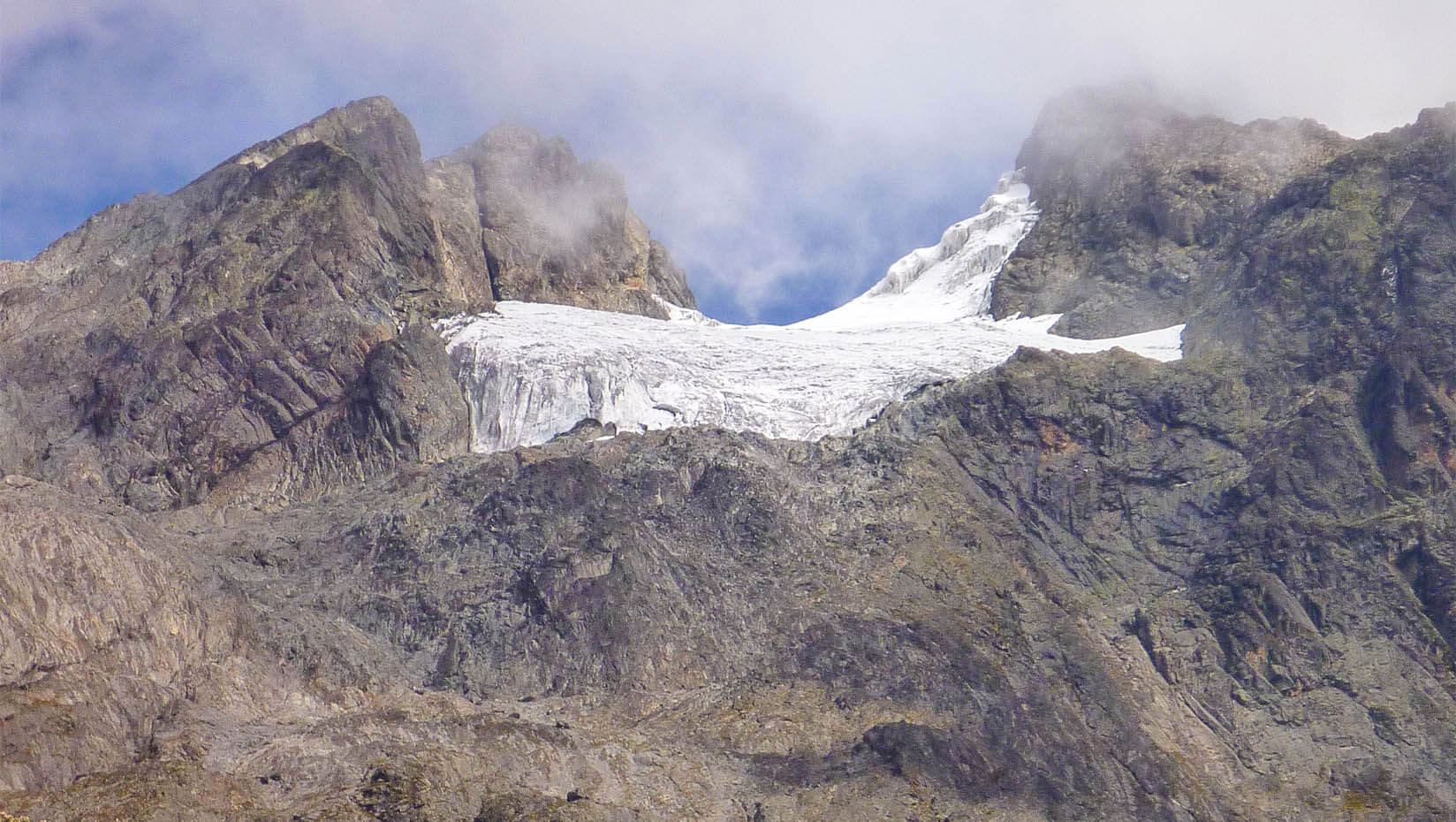
UMaine leads study of Ugandan glaciers that unravels 20,000-year-old geological mystery
Ancient geological discrepancies can not only puzzle scientists, but can also lead to revelations about our present climate once they are solved. An international team led by a University of Maine researcher has uncovered a 20,000-year-old geological mystery in Uganda that will inform how scientists understand the relationship between glaciers, sea level temperatures and precipitation during this time and in this location.
A team of scientists led by Alice Doughty, an instructor at UMaine’s School of Earth and Climate Sciences, conducted a study to determine why, during the last ice age 20,000 years ago, the Rwenzori Mountains of Uganda experienced cold temperatures despite mild sea surface temperatures in the area. Glaciers in general are sensitive to changes in temperature and precipitation. During the last ice age, glaciers in the East African tropics were dry and cold — between 5 degrees C and 9 degrees C — while sea surface temperatures changed relatively little, only between 1 degrees C and 3 degrees C.
Scientists had different theories about this discrepancy. One potential explanation was that the rate of cooling with elevation — also known as the lapse rate — was steeper during the drier conditions of the ice age, leading the glaciers high up in the mountains to be colder than they would have been otherwise.
“The lapse rate is one of Earth’s few negative feedbacks in the climate system, and it helps to regulate Earth’s temperature like a thermostat. It is hugely important to understand how lapse rates changed in the past and how they are changing today,” says Doughty.
The scientists used a 2D ice-flow model with a range of temperature, precipitation and lapse rate estimates to show how the glaciers would grow toward their moraines, the deposit points that mark their known extent at the last ice age.
The results indicated that glaciers can reach these moraines even with the modest sea surface temperature change if there is, indeed, a steeper lapse rate. Moreover, that rate is supported by the available biogeochemical analysis in this area. The model also showed that a large change in temperature and no lapse rate change could achieve the same results, but that is not supported by sea surface temperature estimates.
The findings not only help piece together the geological puzzle of this region’s ice age, but in general, they contribute to the understanding of how the lapse rate can change with time and location, which is vital for informing climate change models on a global scale.
“Tropical glaciers are rare and spectacular. Their deposits can tell us about how climate changed in the middle atmosphere — that is, at around 15,000 feet elevation — over thousands of years. The tropics are basically the heat engine of the world, and what happens to climate in the tropics has global impacts,” says Doughty.
The study was published Jan. 10, 2023, in the journal Paleoceanography and Paleoclimatology.
Contact: Sam Schipani, samantha.schipani@maine.edu
